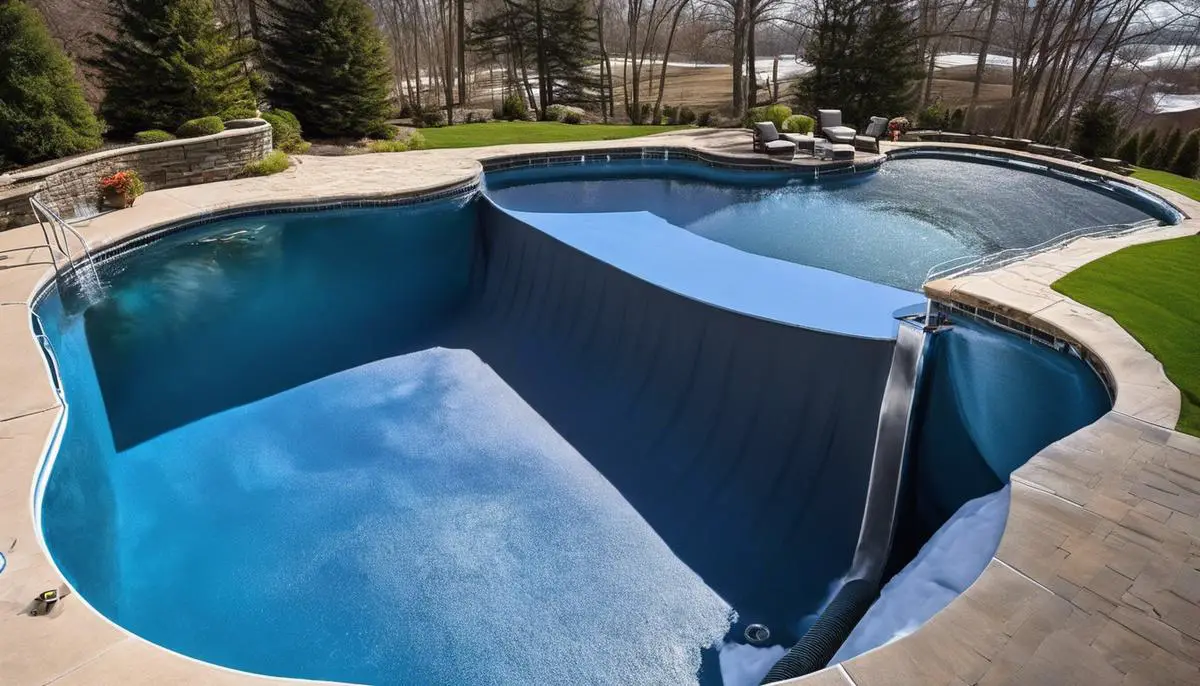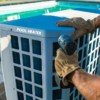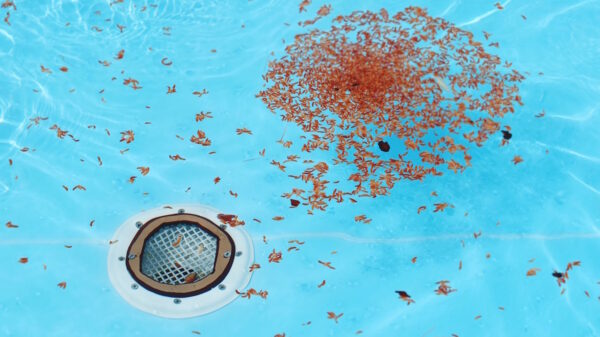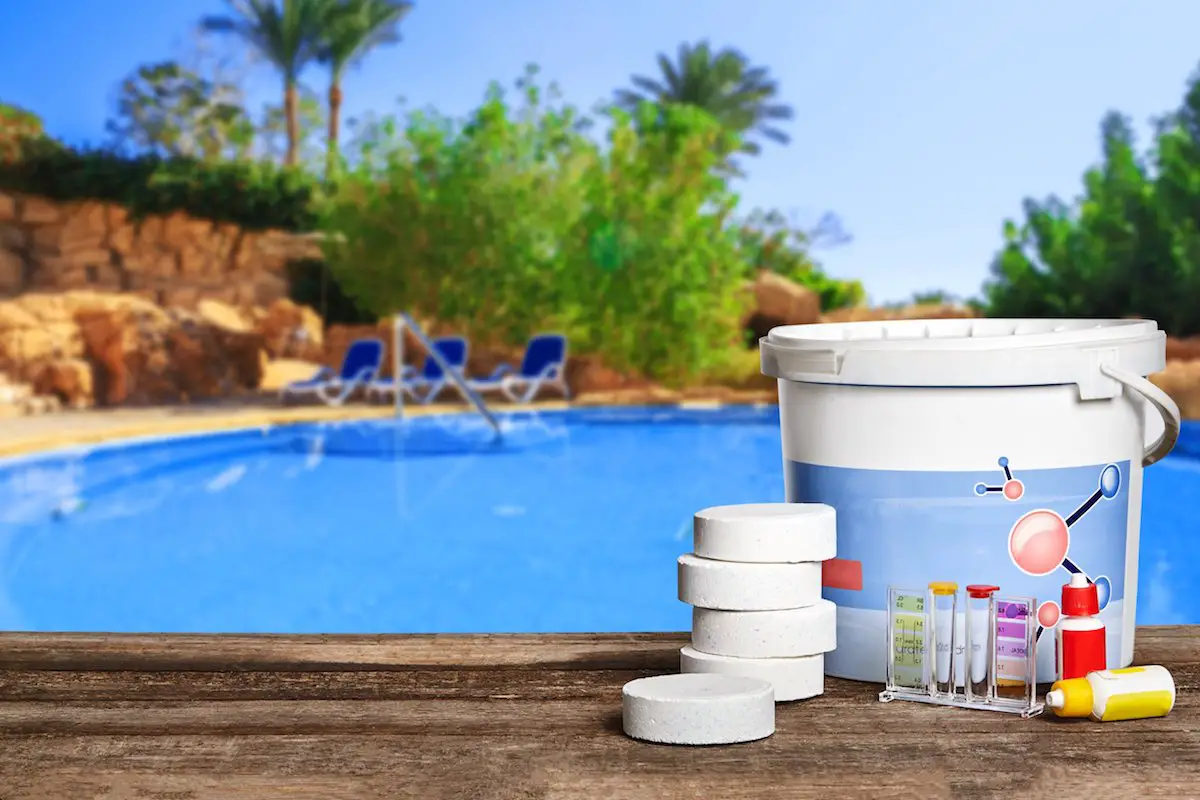As the leaves begin to turn and the crisp scent of autumn fills the air, pool owners are faced with the task of preparing their aquatic retreats for the encroaching winter chill. Winterizing your swimming pool is an essential practice that not only preserves the integrity and cleanliness of your backyard oasis but also ensures it’s ready and inviting come the warmer days of spring. Through this comprehensive guidance, you’ll learn the vital steps needed to avoid winter pool care errors and safeguard your pool against harsh elements, from fine-tuning the chemical balance to securing a sturdy cover over its once lively waters. It’s a journey of proactive care and maintenance, designed to protect your investment and spare you from the consequences of winter’s unforgiving nature.
Proper Pool Winterization To Avoid Winter Pool Care Errors
The Ultimate Guide to Properly Winterizing Your Pool – Save Time, Money & Hassle!
As the leaves begin to tumble and the air gets that familiar chill, it’s time to think about closing up the pool for the season. Winterizing your pool is more than just a seasonal chore; it’s a crucial step to maintaining your pool’s longevity, efficiency, and cleanliness. Let’s dive into the whys and hows of proper pool winterization and ensure that come spring, your pool is as ready for the first splash as you are.
Why Winterize Your Pool?
To some, closing a pool might seem like an optional task—something only those in colder climates need to concern themselves with. However, properly winterizing your pool isn’t just about preventing freezing; it’s about maintaining the integrity of your investment and avoiding costly repairs.
Preserve the Pool Structure
Cold temperatures can wreak havoc on your pool structure. Water expands when it freezes, and that’s bad news for any water left in your pipes or filtration system. By properly winterizing, you eliminate the risk of damage from freezing and thawing cycles that can crack or burst your pool’s plumbing.
Protect the Liner and Surfaces
A clean, well-maintained pool cover is essential in the off-season. It keeps out debris, such as leaves and dirt, which can stain the pool’s liner and harbor algae. By effectively covering your pool, you help maintain the aesthetics and condition of the interior surfaces, saving you a ton of cleaning time come springtime.
Chemical Balance
Alas, an ounce of prevention is worth a pound of cure when it comes to water chemistry. By balancing your pool’s chemicals before covering it, you stave off algae growth and mineral buildup. This makes reopening a pool less time-consuming because there’s less to adjust and clean up.
Energy and Cost Efficient
It’s simple—proper winterization saves money. By adequately winterizing, you diminish the need for extensive maintenance when it’s time to reopen your pool, thus reducing the need for chemicals, cleaning, and potential repairs from freeze damage.

How to Winterize Your Pool
Winterizing your pool is a multi-step process, but each step is equally important to ensure your pool remains in top condition during the off-season.
Step 1: Balance Water Chemistry
A week before you plan to close the pool, adjust the pH, alkalinity, and calcium hardness to the recommended levels. This will help protect the pool from corrosion or scale buildup.
Step 2: Thoroughly Clean the Pool
Remove all debris, scrub the walls, and vacuum the floor. A clean pool now means less work later.
Step 3: Lower the Water Level
Depending on the type of cover you have, you might need to lower the water level. Generally, water should be 4-6 inches below the skimmer for mesh covers and 1-2 inches below for solid, floating covers.
Step 4: Drain and Blow Out Equipment
Drain water from your pool heater, filter, pump, and hoses. Using a shop vac or air compressor, blow excess water out of the plumbing lines. Then, plug the lines to prevent water from getting back in.
Step 5: Add Winterizing Chemicals
Use a winterizing chemical kit that’s appropriate for your pool’s size. These chemicals help keep the water clear of algae and bacteria during the wintertime.
Step 6: Cover the Pool
Secure a durable, quality winter cover over your pool. It should fit snugly and be able to withstand the weight of snow and debris.
Come spring, when the birds start singing and you’re itching to dive back into those refreshing waters, you’ll thank yourself for the meticulous care taken to winterize your pool. Proper care during the off-season is the surest way to enjoy a crystal-clear pool year after year without unnecessary headaches. Remember, when the frost hits, it’s time to close the pool right.
Regular Pool Check-Ups in Winter
Winter pool care doesn’t end once the cover is in place. To keep the pool in tip-top shape for a summer of fun, some ongoing attention through the colder months is essential. While the pool is hibernating, make it a point to monitor both the cover and water at least every two weeks.
On those biweekly checkups, first, ensure that the pool cover is secure and free of damage. A cover that’s tight and undamaged is our first line of defense against the elements, unwanted guests, and debris. If there’s water on top of the cover—be it from rain or melted snow—pump it off promptly. For those sporting a mesh safety cover, this isn’t a concern, but do keep an eye out for any wear or tears.
Turning our attention beneath the cover, clarity is the goal. Through the opening of the cover, if the water looks more like a pond than a pool, there’s work to do. Even in the chill, algae can bloom, and debris can accumulate. So, a cloudy or greenish hue signals the need to top up on winterizing chemicals.
Water levels should also be checked as they can fluctuate with precipitation and evaporation—even in winter. The right level helps maintain pressure on the walls, balancing against any ground pressure. But, be cautious; water shouldn’t touch the underside of the cover, as this can lead to damage.
Don’t overlook the equipment. A serene pool surface doesn’t always mean everything is alright below deck. Check the plugs, valves, and other components for signs of ice damage. Harsh temperatures can wreak havoc, so if freeze guards are installed, make sure they’re functional.
Inspect the pool surroundings, too. Trim back any foliage or branches that could fall and damage the cover or pool. Keeping a tidy perimeter limits the amount of debris that can find its way into the pool and reduces potential habitat for critters that might want to make a winter home nearby.
When the thaw sets in and winter turns to early spring, pay attention to the weather forecast and start planning for a smooth reopening. As soon as consistent above-freezing temperatures are expected, get ready to gradually adjust the water chemistry and prepare for an altogether different pool maintenance routine.
Remember, a bit of vigilance in the winter makes for a smoother, splash-ready pool once summer rolls around. No one wants their tranquil backyard paradise to turn into a swamp over the cold months. Keep an eye out, stay proactive, and watch as the closed pool weathers the winter with ease.

Avoiding Ice Damage
The Freeze Factor: Guarding Your Pool Against Ice Damage
When winter casts its chilly spell, pools face a formidable foe: ice. Understanding how ice can wreak havoc on your beloved oasis is crucial, as is exploring the measures you can take to ensure your pool emerges from winter’s grip unscathed.
Ice’s Threat to Your Pool
As temperatures plummet, any residual water in your pool or equipment can freeze, expanding with enough force to crack filters, pumps, and pipes. This expansion doesn’t stop at equipment, however; it can also lift and crack decking material and even heave the pool walls in severe cases, resulting in costly damages to the pool structure.
Skimmer Damage
The skimmer is particularly susceptible to ice damage, as trapped water can freeze and expand, causing it to crack. A damaged skimmer can lead to serious leaks and require a complete replacement, which is a headache no one wants in the dead of winter.
Ice Damage Prevention Strategies
Skimmer Protection
To prevent damage, remove the detachable components of the skimmer or use a Skimmer Guard, a device designed to absorb the expansion of ice and protect the skimmer from cracking. This small investment can save countless dollars and hours of frustration.
Using an Air Pillow
An often-overlooked hero in the world of pool protection is the air pillow. This accessory is placed under the pool cover and serves two valuable purposes. First, it alleviates the pressure exerted by ice expansion on the pool walls. Second, it encourages ice to freeze inward, towards the pillow, rather than outward against the pool structure.
Securing the Pool Cover
Ensuring your pool cover is secure is not just about keeping out debris; it’s about creating a barrier between the water surface and the freezing air. A taut cover minimizes the surface area where ice formation can occur and helps protect the cover from tear and wear due to ice weight.
Pool Anti-Freeze: A Last Resort
While it may seem like a fitting solution, pool anti-freeze can introduce a set of issues when it’s time to reopen the pool. Only use it as a last resort and make sure it’s non-toxic and specific for swimming pool use. Remember, whatever you put in your pool now, you’ll be swimming in later.
Regular Ice Monitoring
Throughout the cold season, keep a vigilant eye on your pool cover. Brush off snow accumulation regularly to reduce the load on the cover and observe the ice formations. If you notice an abundance of ice, it might be necessary to carefully break it up before the weight takes a toll on your pool’s structural integrity.
Avoiding winter pool care errors is the surest way to safeguard against the frozen menace that is ice damage. By staying prepared and proactive, pool enthusiasts can hibernate with peace of mind, knowing that come summer, their aquatic sanctuary will be ready and waiting, as pristine as those last long, lazy summer days.
Embracing the cooler months with a well-protected pool can make the transition from winter to spring seamless and stress-free. By adhering to these best practices for winter pool care, you not only stave off unnecessary repairs and expenses but also lay the groundwork for countless sun-soaked memories in the seasons to come. As you walk past your pool, under its secure cover, you can do so with confidence, knowing that beneath lies a sanctuary preserved, awaiting the return of laughter and splashes when winter’s grasp finally fades. Keep this wisdom close, and your pool will remain a source of joy and relaxation for many years.















